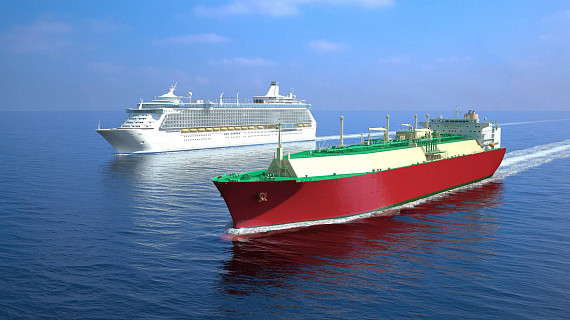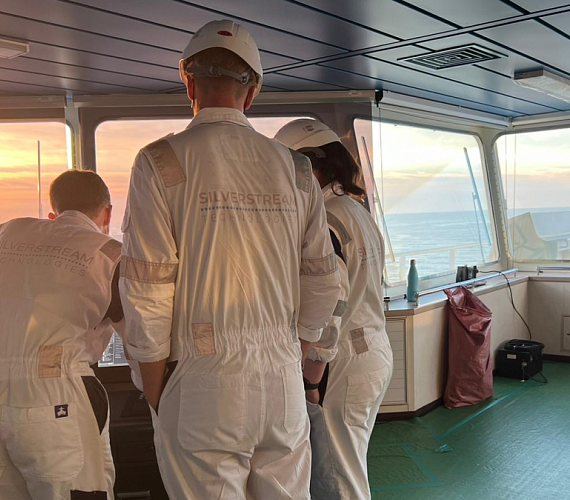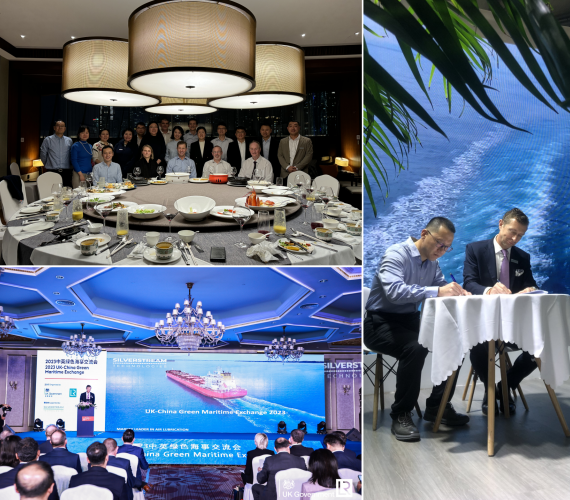对于今天的航运业相关企业来说,降低碳排放所带来的压力正在与日俱增。尤其是对于船东而言,他们花费了大量时间思考如何更好地调整船只的操作和流程,以符合国际海事组织的碳强度指标(CII)以及其他即将出台的相关政策法规。
目前,距离碳强度指标(CII)的正式生效仅剩下几个月的时间,而现实情况却是很难找到切实可行且行之有效的解决方案以应对即将到来的调整。部分航运公司为了急于遵守该指标,正将目光投向一些可能带来短期效果的举措。然而需要注意的是,航运业必须警惕上述举措可能带来的潜在负面影响,这些短视的举措或将起到相反的作用,给企业带来更多麻烦。
慢速航行就是一个很好的例子,业内不少人士认为这是一个充满吸引力的选项,因为它能暂时满足CII相关要求并同时降低燃料成本,从而实现更高的燃料效率。
当船东们努力为其船只获得最高的“A”级评级,有一个不争的事实开始显现:缓慢航行虽然减少了单艘船只的碳排放,但从整体上却将增加碳排放总量。如果所有船只都决定慢速航行,那么很快就需要新的船只加入以维持全球供应链的正常运转。例如,在未采取慢速航行之前,只需八艘船便可以在欧洲与亚洲间往返的路线上实现每周一次的航行服务。在执行慢速航行策略后,将导致维持供应链所需的船只数量增加约12%至50%,从而导致整体航运业的碳排放量增加。
与此同时,航运业还必须认清一个现实:从本世纪下半叶开始,对航运碳排量的限制将会变得更严苛,以达到国际海事组织制定的40%节能目标。这一趋势将凸显慢速航行无法从整体上解决碳排放总量的问题,因此从长远角度来说,该策略不应该被视为一种有效的解决方案。
与此同时,大型石油公司和大宗商品货运商无疑将在短期内宣布,他们将只使用“A”级船只来运输货物。但可以理解的是,单靠“A”或“B”级船只无法满足所有的货运需求,这就意味着航运业需要积极行动起来寻找真正能提高所有船舶的设计与运营效率,而不是寻求短期内满足监管标准的快速解决方案。
CII并不是唯一需要考虑的因素。未来可能实施的碳税所带来的影响也将是举足轻重的,更不用说航运业即将被欧盟纳入排放交易计划所将产生的影响。对于航运业来说,一个比慢速航行更可靠的选择,且对船东和租船商来说更明智的选择,就是广泛推广并使用成熟的清洁技术,例如空气润滑技术,以真正持久、有效地完成全球船队的减排目标。
无论选择何种燃料,采用合适的清洁技术将是实现最大限度地减少航行中的碳排放并提高船舶效率的基石,这也是航运业长期可持续发展的重要因素。更关键是,行之有效的清洁技术能够帮助航运业避免陷入“慢速缓慢”的死胡同。
想了解更多关于Silverstream®系统如何提高您的船队航行效率,并显著减少燃料消耗与碳排放,敬请联系:
Silverstream Technologies上海总经理
Andrew Starforth
电子邮件:andrew.starforth@silverstream-tech.com
==========================
Slow steaming: a path to higher emissions for shipping
The growing pressure to decarbonise is increasing for all stakeholders across the shipping community. Shipowners, in particular, are spending much of their time wondering how to best adapt their operations and processes to comply with the IMO’s Carbon Intensity Indicator (CII) regulation and other upcoming measures that will surely follow.
With only a few months until CII comes into force, solutions are proving hard to find and, in the rush to comply, some shipping companies are eyeing initiatives that promise short-term results. However, the industry must be wary of the potential downsides and counterproductivity of said initiatives, which may bring even more headaches for shippers further down the line.
A good example of this is slow steaming, regarded by many as an attractive and viable option to meet CII requirements and reduce fuel costs due to the higher fuel efficiency achieved when sailing at lower speeds.
As owners endeavour to obtain the top ‘A’ ranking for their vessels, there is an important fact that shall not be overlooked: slow steaming reduces emissions on a ship-to-ship basis but increases them overall. If all ships decide to go slower, there will soon be a need for new vessels to sustain the global supply chain. Before slow steaming, eight ships on a route from Europe to Asia and back, for example, could perform a weekly service. After slow steaming, this number of vessels needed to maintain the supply chain would increase, potentially growing by fifty percent to twelve, resulting in increased emissions overall.
The industy must also come to terms with the fact that, from the second half of the decade onwards, the level of restrictions is only set to tighten in order to reach the IMO’s 40% saving goal. This highlights that slow steaming will not provide the necessary savings and therefore must be seen as an unfit strategy for the long term.
Meanwhile, the big oil majors and the largest cargo owners will almost certainly soon declare that they will only transport their cargo with ‘A’ carriers. But understandably, the needs of all charterers cannot be met by ‘A’ or ‘B’ vessels alone, meaning that our industry needs to do more work to raise the design and operating efficiency of all vessels, rather than looking for quick fixes to meet regulatory criteria in the short-term.
CII is not the only factor at play here. The impact of a hypothecated carbon tax would be enormous, not to mention the impact that shipping’s impending entry into the EU’s Emissions Trading Scheme will have. A much more viable option for the industry than slow steaming – and the smartest alternative for both owners and charterers – is to advance the adoption of proven clean technologies such as air lubrication for a truly lasting and impactful reduction of the carbon footprint of the global fleet.
By maximising emissions reductions and vessel efficiency irrespective of fuel choice, clean technologies will become a cornerstone of all decarbonisation pathways as they hold the keys to long-term sustainable change for shipping and, critically, can discourage our sector pursuing the blind alley of slow steaming.
If you would like to learn more about how air lubrication can increase your fleet’s efficiency, deliver significant fuel and cost savings, and help you in your journey to compliance, please contact: Andrew Starforth, General Manager, China, Silverstream Technologies.
Email:andrew.starforth@silverstream-tech.com



